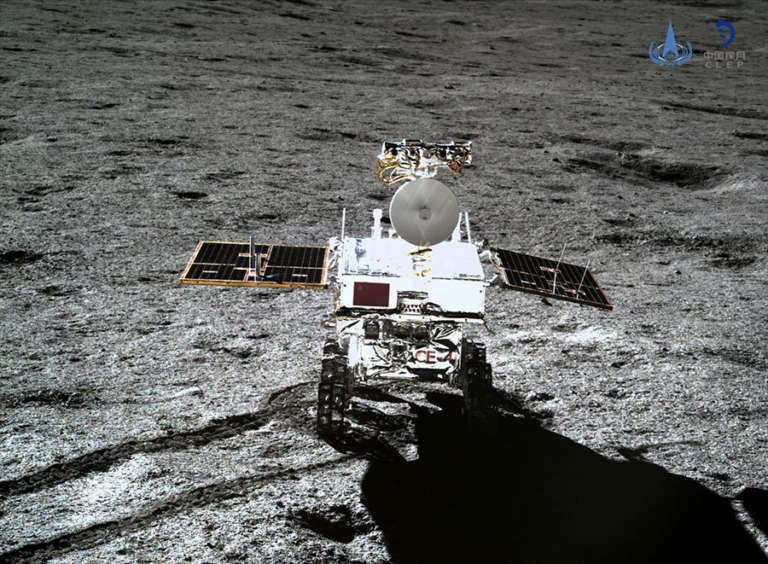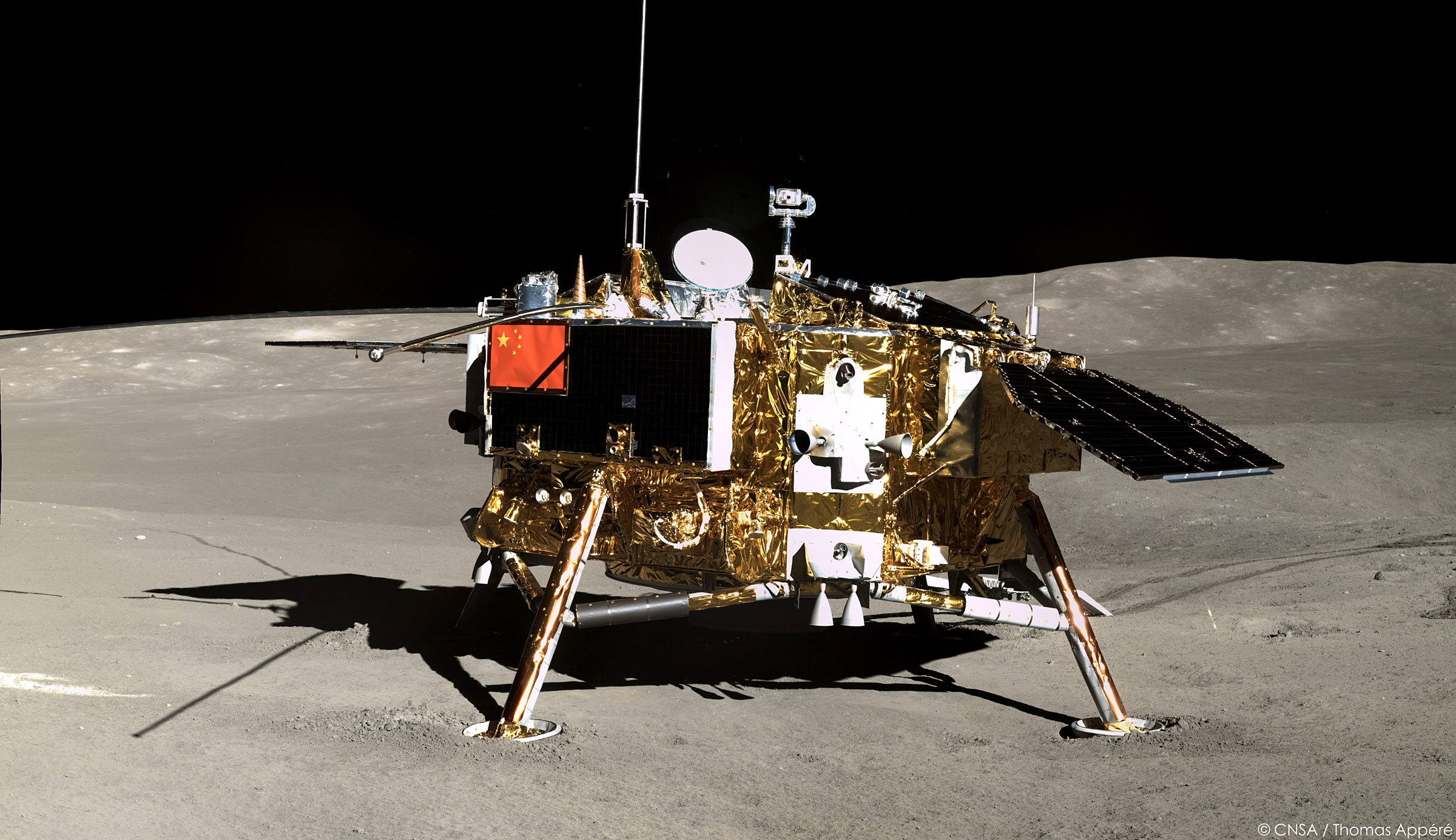Chang'e-4 and Yutu-2, China's mission to the Moon's farside
Highlights
- China's Chang'e-4 mission delivered the Yutu-2 rover to the Moon's farside in 2019 — the first farside landing ever.
- Yutu-2 explored Von Kármán crater, where an ancient lunar impact may have exposed the Moon’s mantle.
- Yutu-2 taught about the Moon's history, which helps us learn about the early Solar System and Earth.
China's Chang'e-4 (嫦娥四号) mission delivered a landing platform and a rover named Yutu-2 (玉兔二) to the Moon's farside — the first mission there by any country.
Yutu-2 landed in Von Kármán crater, within the Moon's South Pole-Aitken basin, in January 2019. An ancient lunar impact there may have exposed the Moon’s mantle. By studying this region directly, scientists are learning more about the early solar system and Earth. The mission also demonstrated the feasibility of future human and robotic far side missions.
The Moon’s quiet, airless far side makes it one of the best places in the inner solar system for science applications like radio astronomy. But missions there require a relay satellite since the far side never faces Earth. China launched the Queqiao relay satellite with two SmallSats, Longjiang-1 and 2, in May 2018.
Chang’e-4 is continuing to conduct science operations, though it is unclear if Yutu-2 is still active, since the rover has not appeared to move since March 2024. Both vehicles power down during the two-week lunar night, when temperatures plummet to -173 degrees Celsius (280 degrees Fahrenheit), to avoid damaging their instruments. They must also sleep when the Sun is directly overhead to avoid overheating.

Chang'e-4 lander instruments:
Landing Camera (LCAM): A black-and-white camera mounted to the bottom of the spacecraft used to image the surface during descent.
Terrain Camera (TCAM): A color camera mounted to a mast on top of the lander that can rotate a full 360 degrees and swing up or down 120 degrees total.
Low Frequency Spectrometer (LFS): Studies low-frequency radio emissions from the Sun and Moon, using the Moon to block radio emissions from Earth.
Lunar Lander Neutrons and Dosimetry experiment (LND): Measures radiation dosages on the Moon to plan for future human exploration. The LND is also attempting to measure the amount of water in the regolith beneath the lander. Contributed by the University of Kiel, Germany.
Lunar biosphere experiment: A publicly chosen experiment in partnership with 28 Chinese universities to see how silkworms, as well as potato and Arabidopsis (a small flowering plant) seeds, grow in lunar gravity.

Yutu-2 science instruments
Panoramic Camera (PCAM): Two color cameras on a rotating mast to capture 360-degree views.
Lunar Penetrating Radar (LPR): A radar instrument used to see subsurface up to more than 100 meters, and the thickness of regolith.
Visible and Near-Infrared Imaging Spectrometer (VNIS): Used to study the mineral composition of the lunar surface around the rover.
Advanced Small Analyzer for Neutrals (ASAN): Experiment to determine how the solar wind interacts with the lunar regolith by observing energetic particles blasted off the surface. Contribution from Institute of space physics, Sweden.
Academic resources
- Jia, Y., Zou, Y., Ping, J., Xue, C., Yan, J., & Ning, Y. (2018). The scientific objectives and payloads of Chang’E−4 Mission. Planetary and Space Science, 162, 207–215.
- Ling, Z., Qiao, L., Liu, C., Cao, H., Bi, X., Lu, X., Zhang, J., Fu, X., Li, B., & Liu, J. (2019). Composition, mineralogy and chronology of Mare Basalts and non-mare materials in von kármán crater: Landing site of the chang’e−4 mission. Planetary and Space Science, 179, 104741.
Support missions like Chang'e-4
Whether it's advocating, teaching, inspiring, or learning, you can do something for space, right now. Let's get to work.


 Explore Worlds
Explore Worlds Find Life
Find Life Defend Earth
Defend Earth


